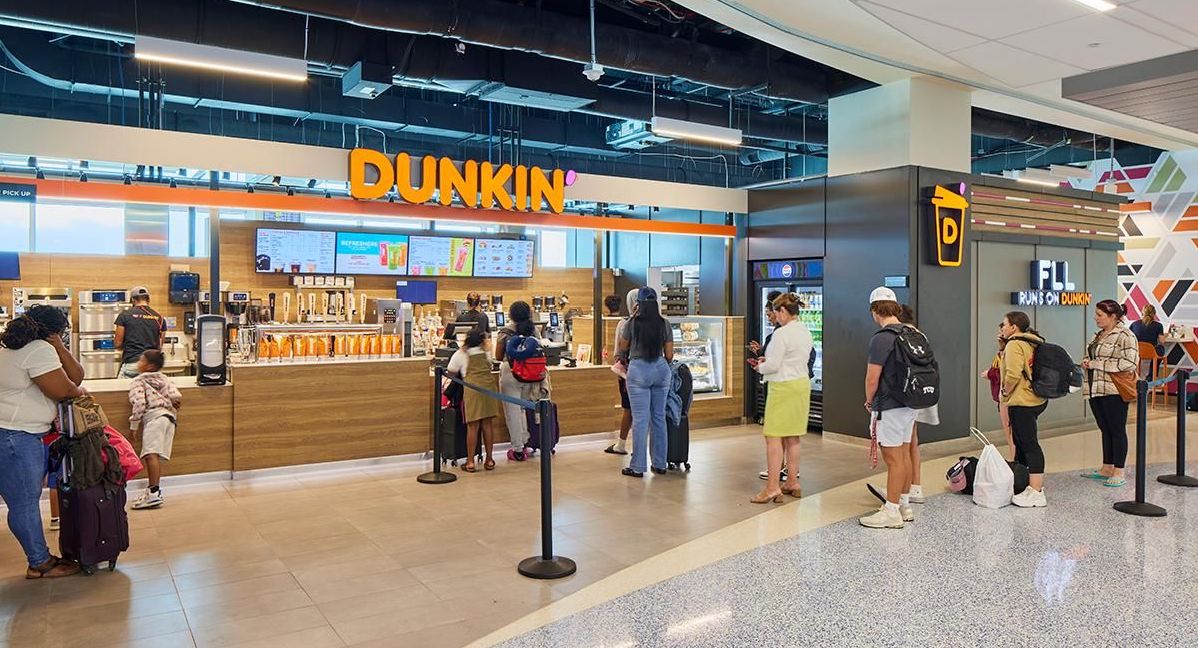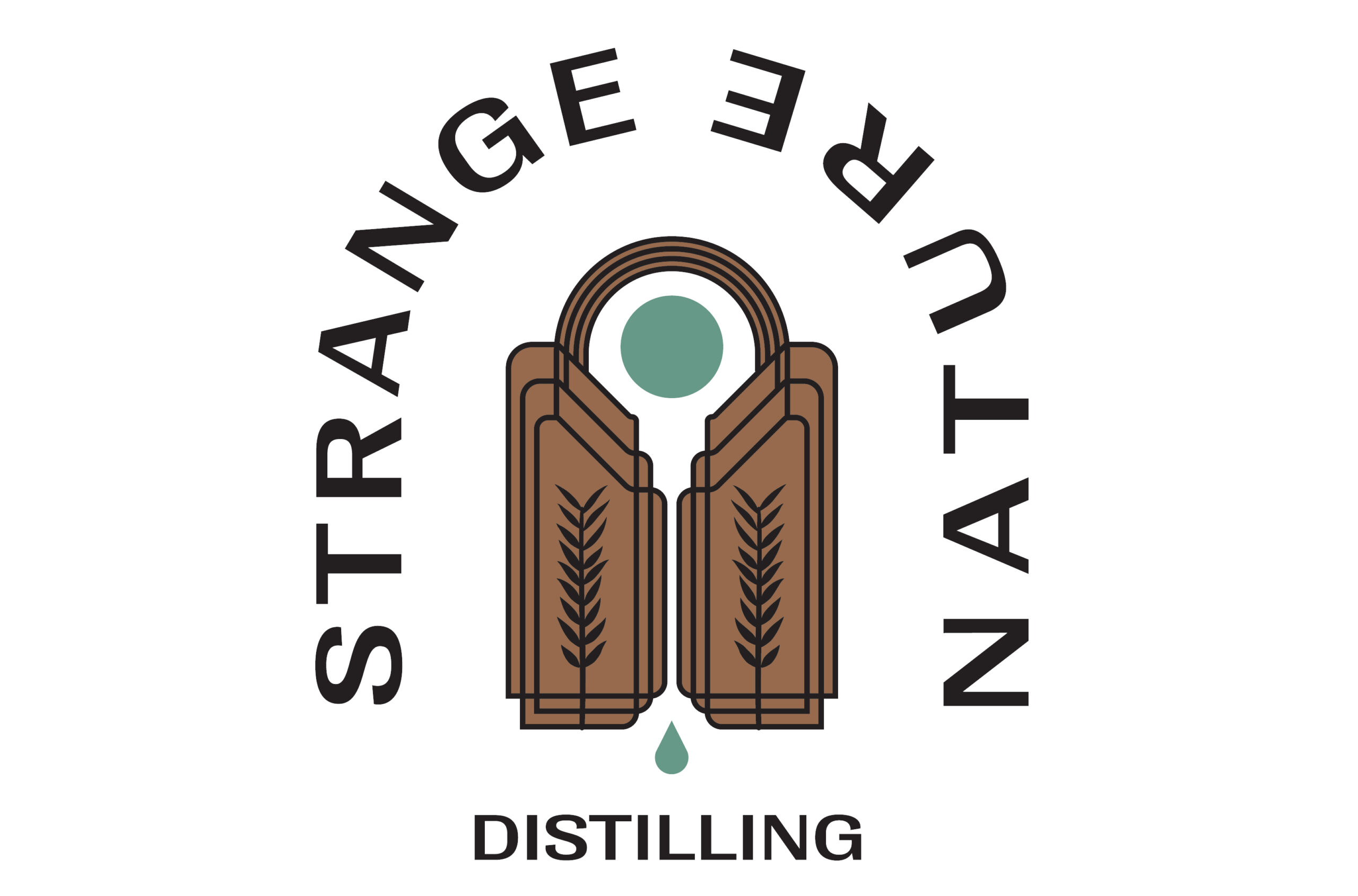DENMARK/INTERNATIONAL. Danish company Intelligent Track Systems (ITS), in collaboration with Blueprint, is maintaining an ambitious roll-out programme for its ‘smart’ shopping trolleys, with the number of airport partners expected to reach 15 by the end of this year.
That’s according to Managing Director Morten Pankoke, speaking to The Moodie Davitt Report about the opportunity for airports, concessionaires and brand owners that the trolleys represent for consumer marketing, sales and data gathering.
As reported, ITS trolleys give users information on access routes, departure times, departure gates, product promotions, tax free shopping guidelines and other relevant airport information in their preferred language. They also provide heat mapping data that can be used by airports and concessionaires.

The system is accessed through an ITS-programmed tablet, which is placed on a bespoke ITS trolley or an existing airport or shopping trolley. It is activated by passengers via scanning their airline boarding cards.
Hamburg and Vienna airports are among the latest partners to have signed up to offer the ‘intelligent’ trolleys to passengers, after initial trials at San Diego and then Nice Côte d’Azur airports, with Oslo Gardermoen and Riyadh the others to introduce the system recently.
Over the past two years, ITS has extended its reach to ten airport agreements, with six active and four more to be announced in coming weeks. Of the ten to date, Hamburg is the first to have signed up as a long-term partner following the initial trial phase.
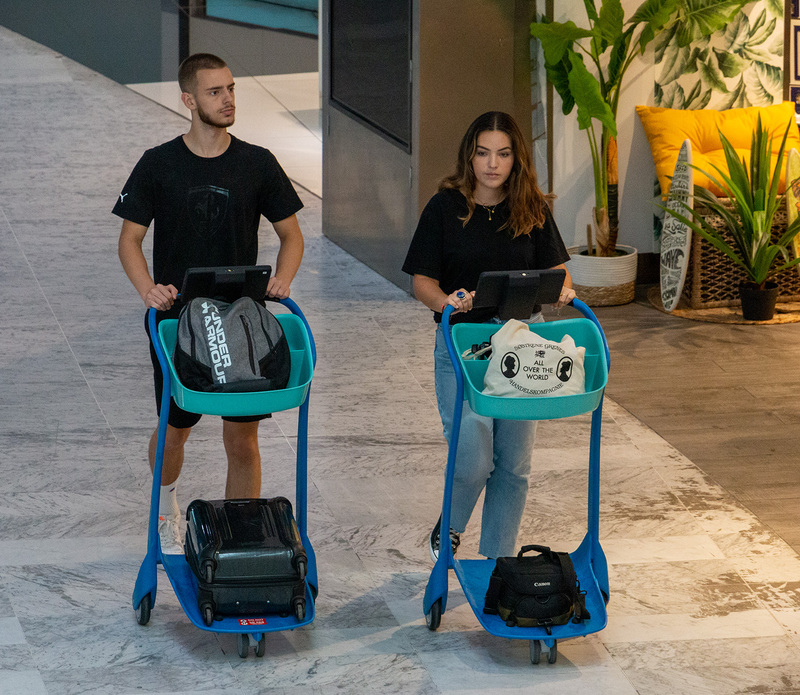
Pankoke’s own story (he is also Executive Vice President of CPHI Holding, which owns ITS) is one strongly linked to brand building and consultancy. He worked for 17 years as an influential figure in Denmark’s media, primarily as a TV and radio host, before moving into management and C-level roles. He ran his own consultancy for brands, including powerhouses such as Carlsberg, for eight years.
Using a background in innovation management from the Stanford Research Institute, he helped start-ups grow and was involved in product development across multiple sectors before alighting on the aviation world through CPHI Holding, where he began as an investor before taking a senior executive role.
Pankoke says: “I could see the potential on the innovation side but also there was a strong group spirit [at CPHI] to not just create new products but also new business models that would challenge the status quo.
“At airports you know who is there, for how long they are there and you can do so much if you have the right information. Yet in many ways the aviation industry has not been that innovative. I saw an opportunity with ITS to introduce online experiences in retail into a physical environment.
“We felt that if we could get boarding pass information, and we could start combining that with behavioural and contextual information, then we would be able to generate data that would have a granularity that was not available in the market.”
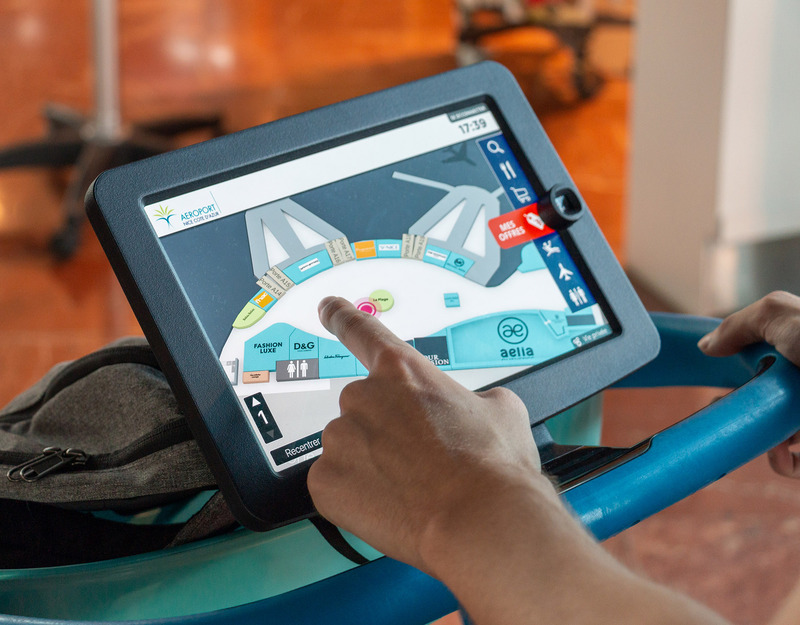
The next step was to ensure that airports would also see the opportunity and grant access, allowing ITS to monetise the system via industry partners and ultimately, through sales and generating consumer data.
Pankoke says: “We came up with a model that it should be free for an airport – it is a service to them – and in turn they give us the right to operate trolleys and to present advertising on our platform. It is also free to use for the travellers; they just need to give us their travel data. We then go to the retailers, the brands and the advertising concessionaires and offer them the opportunity to partner with us. We offer them a level of data they don’t have today, and they can in turn offer that to their partners.
“The other part of our thinking was that we should not become a production unit, but that we partner with people who could build trolleys, who could develop the software and with Blueprint who could help us access the market in the right way.”

With the ITS project still relatively early in its development, and more airports coming on stream, investors are continuing to fund its progress. But, says Pankoke, “we are getting closer to going cash positive and should achieve that this year”.
The ITS business model works off several revenue platforms. One is promotions or in-airport ‘call to action’ advertising, through which ITS guides travellers to a shop or brand. Then there is more general advertising for brands across multiple airports.
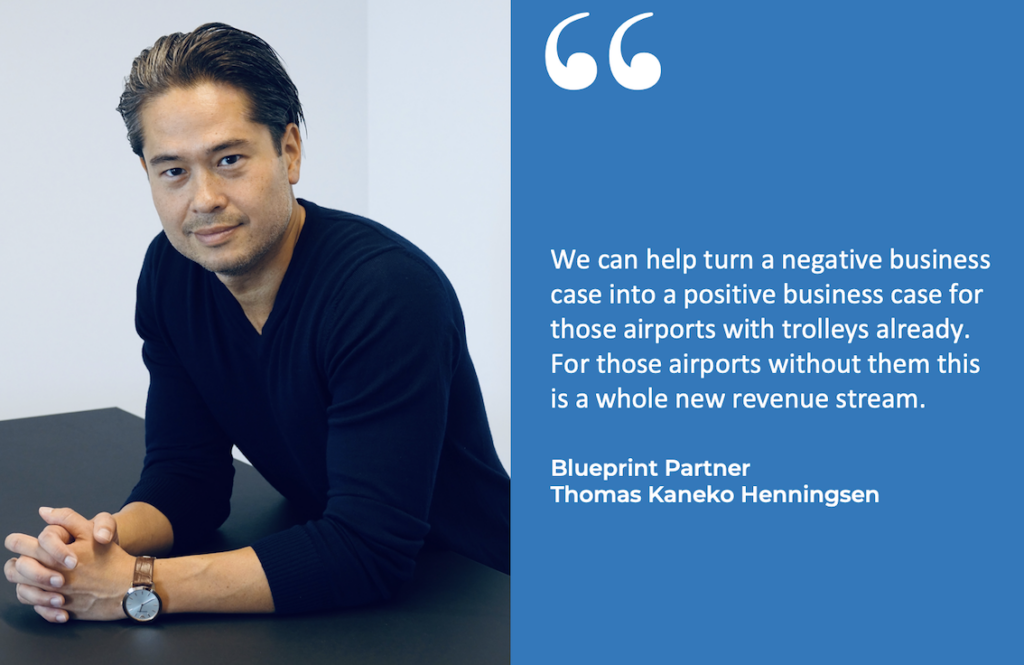
ITS also conducts surveys via the screens on the trolleys, which offers valuable data for partners. The fourth is tracking the flow of travellers through the airport, using the trolleys, giving a heatmap of customer flow and offering opportunities to target shoppers or even build the information into concession planning.
“Not only that, but we can segment the passenger information,” says Pankoke. “We can tell you how long those who are travelling to Paris stay in one area or how they move about; similar for those who choose Chinese language on the platform, or other segmentations. That can guide you on when you promote to them, and at what point we can encourage them to visit the stores. Even when they’re idle or waiting at the gate, we can supply content from the partners.
“We can do geolocation. We can say to a partner that inside or around a pop-up they own the engagement. That can be very powerful.”

For ITS a sophisticated back-end system supports the system and supplies reports on passenger movement and shopping habits. The digital system is supported by a team of ambassadors at each airport, who onboard the users, address their questions as well as collecting the trolleys where they are left pre-boarding.
To build and install each trolley costs the company around €700, and includes charging stations. The figure is a reasonable one, says Pankoke, given the rate of return that should accrue from the key revenue streams once the business reaches a certain scale.
“Overall, we try to make a model where everybody is happy,” he says. “For the airport, it comes for free. If we have a profit, they will get part of it. To the retailer, we say, you have the right to sell to the brands, and you can put extra margin on top every time you sell. Plus you will have a new revenue stream.
“The brands win from increased sales. They are used to paying for exposure based on numbers of impressions so this is not a new idea. It is just a question of encouraging them to believe in the platform and to allocate funds, as it can really make a difference.”

Blueprint Partner Thomas Henningsen, a former Copenhagen Airport senior commercial executive, homes in further on the advantages for airports.
“Airports get a lot of data on travellers, but we want to isolate high-spending passengers and have a conversation with them where possible. This system allows that. Not only that but with a wealth of data you can start planning your space in new ways based on heatmapping, what locations are visited by certain groups, and strengthen your appropriate offer there.
“Many airports have heat mapping. It is the selective heat mapping where we drill down by user that makes this unique. As the airport I can start redesigning the brand mix, putting different offers in where they are needed. As well as that you can survey people for satisfaction levels or about new experiences they want to see.”
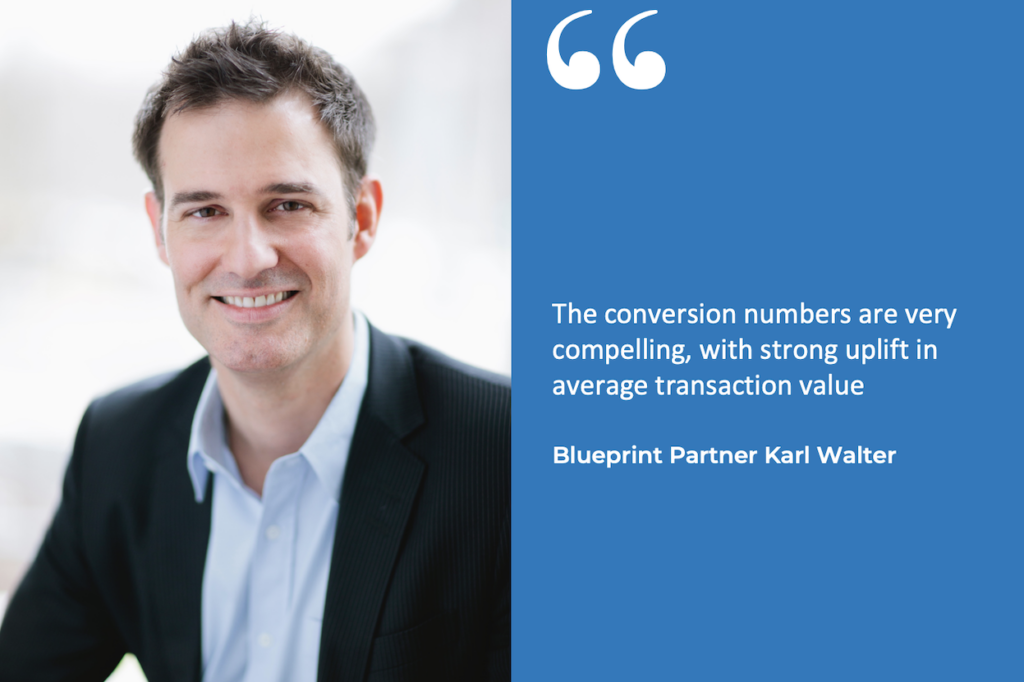
But do travellers interact with the surveys, we ask, or simply enter their boarding card data and use the trolley as a guidance tool?
Pankoke says that around one in four users completes a survey, which over time offers a robust set of data on travellers’ needs and demands.
“We think you get a lot more quality data than if you survey manually. Plus you can track it over the year, through peak seasons and you can install instant questions about new stores, promotions, brands, anything at all.”
Conversion levels to sales are also high, he adds.
“Of those who use the trolleys, 50% go into a shop and of these two-thirds respond to the ads by buying something, so that is around one third of those travelling on average.”

Blueprint Partner Karl Walter, formerly long-time head of Dufry Sweden, offers the view from a retailer perspective.
“The conversion numbers are very compelling, with strong uplift in average transaction value from what we have seen so far. The retailer gets a whole airport view, not just the sales data from their own store. What we find is that travellers are happy to buy in as they get the basic travel data about wayfinding; then you overlay that with the shop and brand promotions, and it becomes a strong proposition.”
Just as importantly, the system offers engagement with new audiences, says ITS.
“Around 50% of users are 20-40 years old, a segment which travel retail often struggles to engage with,” says Pankoke. “On this platform they are open and approachable. We are trying to build more gaming style features into the programme to ensure even higher engagement.”
“It also presents a solution to what many airports face, and that is getting travellers to download the airport app – very few do, and most never update it. Yet here you have a lot of information including commercial, and it is at your fingertips and has functional value.
“We could have put a mobile device on the trolley, but we wanted to separate it from your mobile device. You can trust that we will not fiddle with any of your social media data, we will not push anything to your phone, and we will not extract anything because this is isolated media.”
On the Blueprint role in driving the ITS story forward, Henningsen adds: “We work hard with Morten’s team to sign up the airports and to get retailers and brands to commit. It’s important for the airports to know we have these partnerships in place.
“The trolley business model is not an easy one traditionally. Some airports have them but they are investment-heavy and operationally costly in the airside environment. We can help turn a negative business case into a positive business case for those airports with trolleys already. For those airports without them this is a whole new revenue stream.
“We don’t ask any airport for investment, to rent or lease. For the consumer it is free to use, and even for the airlines, you have a prompt to get to your gate via a countdown screen, so they will get there on time. Everyone can gain.”

Pankoke says that the challenges now lie in scaling up at pace with airports, and ensuring travellers use the service.
“We have some back-end work-ons but the front end is easy to use and has all the functionalities we need. Now it’s about making that more attractive to the traveller.
“As an investor, it is about making this venture profitable quickly. We are onboarding retailers and brands but in the end it is about them continuing to use the system over time, not just proving the value now. Our plan is to grow the partner base over the coming years, create volume and scale it fast.
“We also have a ‘lighthouse’ strategy where we would like to attract influential, large airports to join us as that encourages others in their peer group, and makes a difference.
“We also have no doubt that someone will come in as a competitor – technology-wise it is possible. But we believe that being first, fast and creating the volume are the keys to success.”











